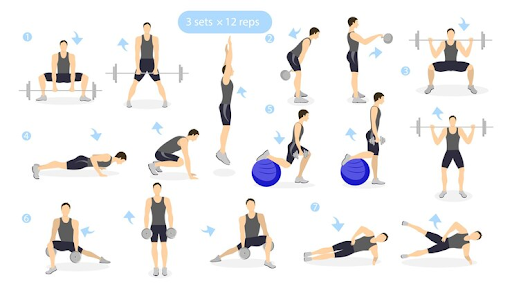
Muscular strength is essential for overall wellness and boosts confidence. Strength training, such as kettlebell training, requires muscle work and endurance. Resistance can be found in free weights, machines, or bands.
Home exercises can be done with a chair, nonslip surface, and tennis ball. These things provide enough resistance for beginners.
Here, we will explore some critical exercise methods for your overall health.
What is muscular strength?
Muscular strength involves exerting a significant force in physical movements. It does not matter whether muscular endurance involves repeatedly performing physical activities without becoming tired.
Developing muscular strength can be beneficial in various aspects of life. For example, it is picking up children or moving furniture, allowing for more effortless movement without difficulty.
Stretching
Stretching is vital for maintaining flexibility, especially in aging muscles. As muscles shorten and malfunction, the risk of muscle cramps, pain, and injury increases.
Regular stretching increases the range of motion and reduces pain. Aim for stretching daily or four times per week, warming up muscles with dynamic and static stretches for various muscles.
Avoid pushing stretches into painful areas to avoid tightening muscles.
Dumbbell Chest Press
According to Gagliardi, pushing exercises at an intermediate level target your shoulders, arms, and chest.
As you move the weight, your arms, shoulders, and chest all work together to regulate the resistance of the dumbbells.
Jumping Jacks
This cardio exercise improves heart rate and muscle strength, promoting blood circulation. It involves standing with shoulder-width apart, jumping up, and raising overhead.
Benefits include improved bone and muscle strength, weight loss, heart health, stress reduction, and cardiovascular benefits.
However, it may pose risks of injury and lower body pain, especially for those with pain in these areas.
Aerobic exercise
Aerobic exercise is vital for body functions, increasing endurance and speeding up heart rate and breathing. It relaxes blood vessel walls, lowers blood pressure, burns body fat, and reduces inflammation. It also boosts mood and reduces the risk of heart disease, stroke, type 2 diabetes, breast and colon cancer, depression, and falls.
Aim for 150 minutes of moderate-intensity activity per week to achieve optimal results.
Squats
Traditional squats strengthen your thighs, hips, and buttocks. For this variation, you need a chair. This is how you do it:
Step 1: Place your feet slightly wider than shoulder-width apart and stand in front of the chair with your back to it.
Step 2: Maintain your weight in your heels as you lower yourself into a nearly sitting position. From your waist, bend forward a little bit.
Step 3: As you descend, count to four. After a brief pause, carefully rise. For a single set, repeat eight to ten times.
Strength Training
Strength training helps build muscle mass as we age, enhancing confidence and ability to perform daily tasks. It stimulates bone growth, lowers blood sugar, controls weight, and improves balance.
It also reduces stress and pain in the lower back and joints.
A physical therapist or certified personal trainer can offer a strength training program incorporating body weight and resistance exercises.








